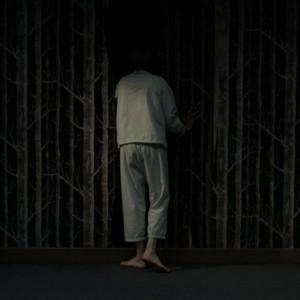“Before the world became the world, it was an egg.
Inside the egg it was dark.
The rat nibbled on the egg and let the light in.
And the world began.”
A film of very strange cataloging (which we could only simplify by defining a documentary) which opens with a new and singular version of the myth of creation, through the point of view privileged than a rat. The most denigrated, segregated animal that has always been used metaphorically as a symbol of disease and dirt here even becomes the center of the world, from which everything originated. A pretext, narrative first and foremost, but also historical and anthropological to tell about us: human beings, even more complex animals who have always had to coexist with us (with rats and with ourselves), especially in an equally singular city like Baltimore, very far away (apparently) from that classic beastly savannah of lions so often told by National Geographic.
Recalling the best documentary traditions from Herzog to Chris Marker, Theo Anthony (here in his feature film debut) constructs a a work of great heterogeneity, which starting from an apparently informative character arrives at an extremely visionary and poetic dimension.
It seems like a puzzle, with fragmentary pieces that we are difficult to rearrange at the beginning: we see entire sections of history, of eugenics, of urban planning. From the historic laws of Baltimore with which the organization of neighborhoods was sanctioned, to the incessant and diversified behavioral experiments on mice. From interviews with ordinary people and their relationship with rats, to actual museum visits to training facilities for investigators and criminologists. Up to even entire segments that lead back to video art. But, as happened in Michael Haneke's '71 Fragments of a Case Chronology', slowly those multiple pieces will come together in a progressive crescendo of tension. In that infinite concatenation we begin to see something bigger. Common elements, but above all constant. In time and space. Between men and animals. Between mouse and man.
As in 'Dark Night' by Tim Sutton (where the fragments of empty lives of many young Americans highlighted disturbing aspects of society), here too through the singles portraits summarize a collective way of thinking, American certainly, but also profoundly Western. We don't know who the good guys and who the bad guys are, or at least not absolutely. We simply witness man's different ways of reacting to what surrounds him, but the sensation is that something distressing permeates that reality.
If you can escape in the savannah (or at least try), in Baltimore there seems to be no escape. It is not there for mice, it is not there for men. We are all in the same environment (even if we don't meet). We all have a cage (more or less large) in which we are confined: whether it is understood as physical (a narrow place to live in) or existential (collective, moral, cultural). And it is a cage that, despite changing shape and color over the years, has always been there. Constantly. It is a closed place that oppresses us, that forces us to live crowded together, close together, without the possibility of escaping or escaping our nature. We move along the streets of Baltimore, in the neighborhoods, in the houses. With the illusion of freedom.
We continually switch between present and past, between archive photographs and interactive explorations of the city through Google Maps. And in this incessant variability of means and contents, from the primitive to the technological, we do not find different worlds. We never feel out of place. Because the city map is always the same. Perfectly superimposable. And so with it the animals that inhabit it.
If in Parasite the environment became essential to assign roles (social and moral) to embrace in order to feel safe, including being able to move in a constant game of masks, in Rat Film space planes seem static. As if the movements (although present) were illusory. And the environment, although similarly oppressive, was one and only one. Unaltered and immutable.
We are all parasites. But not the others. Of the environment in which we live.
Where ultimately everything always boils down to the law of prey and predator.
Of who eats and who is eaten. Of those who live and those who die.
The savannah has returned to the neighborhood.
But it is not as heartening as a National Geographic documentary.




